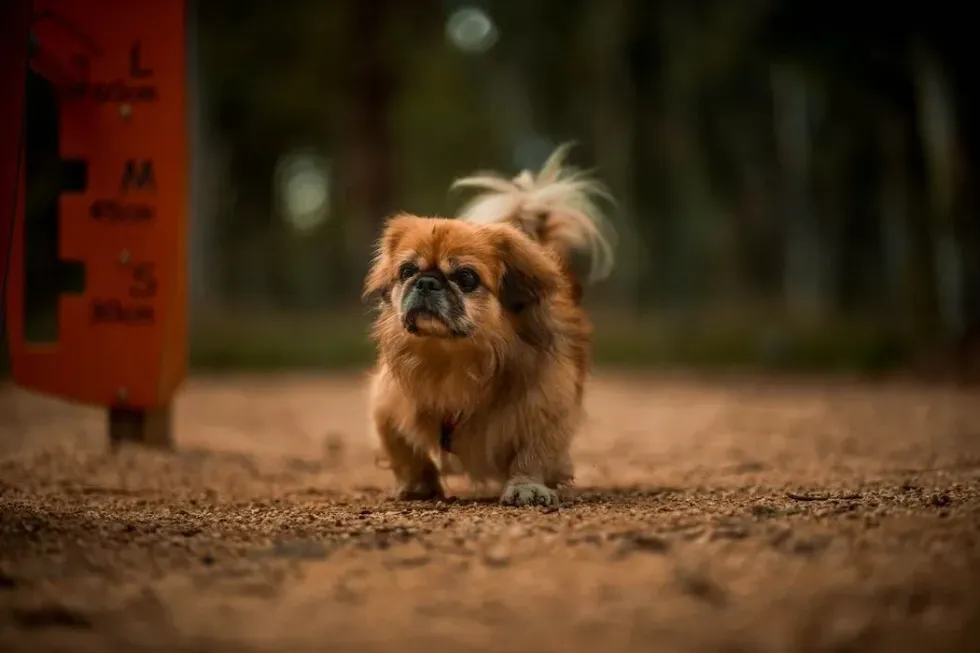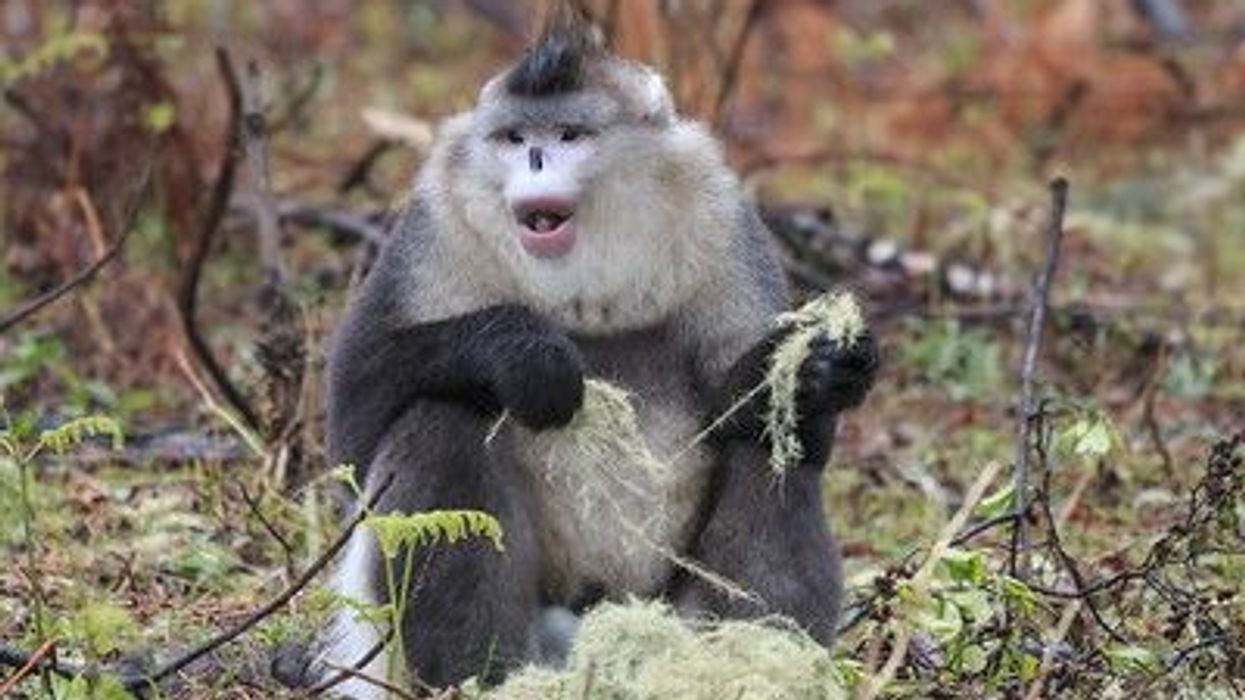Have you ever heard of a Pekingese dog? It's a cute little toy dog from China.
If not, then this article will provide you with all the interesting facts about the Pekingese dog breed. This breed ranks at 92 of 197 under the American Kennel Club when it comes to popularity. A Pekingese dog, famous for its cuteness and affectionate nature, is one of the best toy dogs.
The Pekingese breed is the favorite breed of many Chinese imperials and that's why these dogs have a royal attitude, boldness and self esteem to them. The cute appearance of this breed makes them appear like a lion dog.
Pekingese is a purebred and this breed has given us many more beautiful breeds of dogs such as Peagle which is a beagle and Pekingese mix, Peke-a-chon a bichon frise and Pekingese mix and many more. There is still a lot of fun Pekingese facts to learn.
So, let's have a look at some more fun facts about Pekingese.
There are many interesting facts about these toy dogs which we will unveil in this article. After reading about these lion dogs, you may also look at our articles on Chow Chow and Afghan Hound.
Pekingese Interesting Facts
What type of animal is a Pekingese?
A Pekingese is a small toy dog breed from China. They were introduced to the western world when one dog of this breed was gifted to Queen Victoria after successfully invading the Imperial Palace in Peking, China. After Queen Victoria grew fond of the Pekingese, the popularity of this breed skyrocketed.
What class of animal does a Pekingese belong to?
A Pekingese lion dog belongs to the mammal class of animals. These dogs were also known as sleeve dogs in history because of their small size. Dating back well over 2000 years, Pekingese may as well be one of the oldest dog breeds to have been domesticated.
How many Pekingese are there in the world?
There are thousands of Pekingese in the world. These dogs are common dogs in China, and their population is good in numbers. They were originally bred by the imperial family of China as companion dogs.
Where does a Pekingese live?
A Pekingese is a toy dog who lives in a house with his/her human family. They have medium to high energy levels and require regular exercise to remain healthy.
What is a Pekingese's habitat?
These dogs do not have any specific needs for their habitat. These imperial dogs can simply live in a home or apartment. They are small toy dogs, and they do not necessarily require a big room for their activities.
Who do Pekingese live with?
Pekingese live with people as pet dogs. They can easily co-habit with other dogs and pet animals in a normal household after proper training. They should not be left alone as they like company.
How long does a Pekingese live?
The average lifespan of the Chinese Pekingese dog is between 12-15 years. With proper training, grooming, and regular exercise, their life span can be improved slightly.
How do they reproduce?
Pekingese reproduce through sexual reproduction. The gestation period of a Pekingese dog can be 58-68 days long. A female Pekingese dog can give birth to two to four Pekingese puppies at once.
What is their conservation status?
These dogs are not rare breed dogs, and they can be easily found in China. So, their conservation status is of the Least Concern as per the American Kennel Club.
Pekingese Fun facts
What do Pekingese look like?
Pekingese are tiny dogs with a longer body and bowed limbs. Pekingese dogs have short muzzle, big round eyes, and ears hanging off the head.
They are fluffy dogs and have super soft undercoat and overcoat comprising silky hair. They are fluffy dogs and have super soft and silky hair which can be grey, white, black, fawn, black & tan, cream, fawn brindle in color.
Their rolling gait is one of a kind and is unique to this breed. When it comes to sports dogs of this breed, a self-colored face or black mask is equally acceptable.
How cute are they?
The dogs of Pekingese origin are well known for their cuteness. Their fluffy appearance and small face make them look super adorable and cute. A Pekingese dog gets 10/10 from us when it comes to cuteness as it is one of the cutest breeds of pet dogs.
How do they communicate?
These Chinese lion dogs are good at expressing themselves. They can express their feelings by barking, howling, growling, and whimpering.
How big is a Pekingese?
A Pekingese lion dog is not a very tall dog, but they are pretty long in length. These dogs are approximately the same size as the Chihuahua dog, which is the smallest breed dog.
How fast can a Pekingese run?
A Pekingese dog is not a very fast runner, and just like other common dogs, it can run at a speed of 15-20 miles per hour. With proper training, the running speed of this sports dog can be improved slightly.
How much does a Pekingese weigh?
A Pekingese dog is not a very giant dog, and it weighs around 7.05-14.10 lb.
What are their male and female names of the species?
A male Pekingese will be called a Pekingese dog, and a female Pekingese will be called a Pekingese bitch. There is no special name allotted to their male and female species.
What would you call a baby Pekingese?
A Pekingese baby will be called a Pekingese puppy. A Pekingese puppy looks extremely adorable and cute. With proper training, they can be made to perform some simple tasks.
What do they eat?
A Pekingese dog needs half a cup high-quality dry dog food twice a day. Dog food has all the essential components in it, such as meat, cereals, grains, etc.
Are they loud?
These Pekingnese dogs are moderately loud. They are not very noisy and irritating, but sometimes they can bark a lot as they have high energy level, and their barking can be irritating and troublesome to some people.
Would they make a good pet?
Yes, this dog is one of the best lap dog breeds. These friendly and calm dogs are best suited for families and persons who are owning a pet for the first time.
They are not very aggressive and trouble-causing dogs, and so they are a really good pet. Though, you must take care of the health of your pet through regular check-ups. Proper training will also help ensure good health and optimal weight.
Did you know...
A Pekingese can sometimes act stubbornly and selfishly, but they can never cause harm to any person or other dogs.
Dogs can't eat all that a human can eat, but there are some human food items which a Pekingese dog can also eat such as carrot, dairy products, white rice, and apples. A dog can't eat spicy cooked food, so don't ever give any spicy food product to your dog.
Pekinese dogs are sometimes thought to be quite slow as they are rather sloth like, so many consider them dumb, although this isn't always the case.
A Pekingese can be a really nice pet.
If you wish to have a Pekingese as a pet, then there is nothing to worry about as these dogs are very affectionate, calm, and friendly with their owners. Moreover, they don't need a large space for their daily playing and exercises, so these dogs are ideal for apartment life.
There is no denying that a Pekingese is an ideal pet, but there are some things that a dog owner should know before keeping a Pekingese as a pet, such as the price of the dog, maintenance and grooming requirements etc.
How much does a Pekingese cost?
A Pekingese dog can cost you $700-$3000. A pure Pekingese dog can even cost you $3000 and above. These dogs are pretty expensive, and maintaining them will also cost you a lot.
Do Pekingese require a lot of upkeep?
Yes, these dogs require high maintenance. Their soft and shiny hair is the reason why they need daily maintenance.
In order to maintain the shine of their hair, they need daily to weekly grooming. The longer their hair is, the more will be the burden of maintaining them. Some owners get the hair of their Pekingese pet cut, as this makes their grooming way more easier.
A Pekingese is an intelligent, loving, and good-natured dog. They are usually calm and friendly with others, but many times these dogs can be stubborn and aggressive.
A Pekingese can even act a little dumb sometimes. Generally, a spoiled Pekingese can showcase slightly dumb and stubborn behavior, but if these dogs are properly trained and tempered, then these dogs are always pretty calm and sweet.
A Pekingese dog can suffer from many health-related problems such as brachycephalic airway syndrome (which creates breathing difficulty in the dogs), intervertebral disc disease, heart disease, and syringomyelia. It is very important to take care of these health problems as these diseases can become real fatal for your Pekingese dog.
Here at Kidadl, we have carefully created lots of interesting family-friendly animal facts for everyone to discover! Learn more about some other mammals, including Boykin Spaniel, or Miniature Goldendoodle.
You can even occupy yourself at home by drawing one on our Pekingese dog coloring pages.









